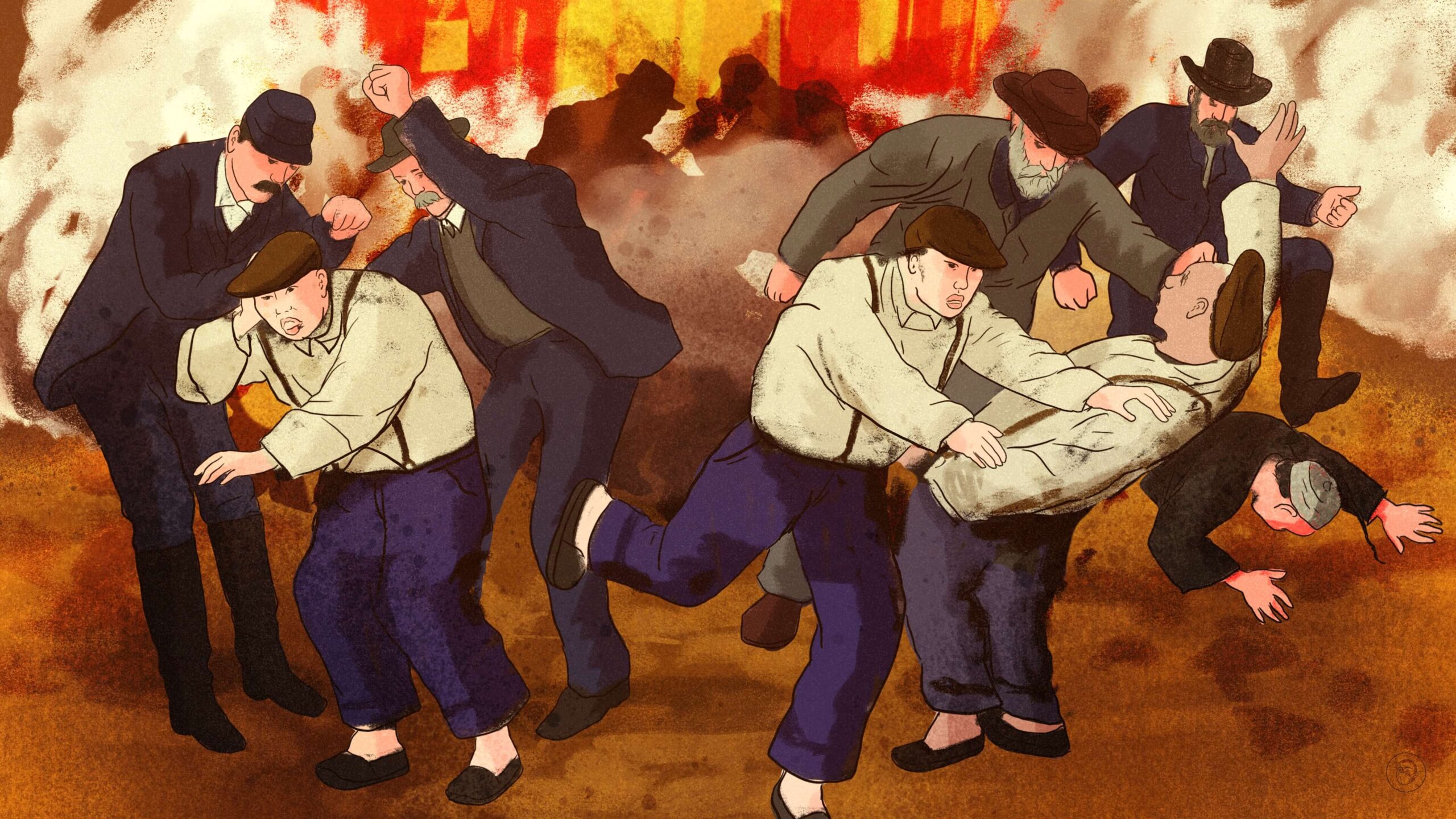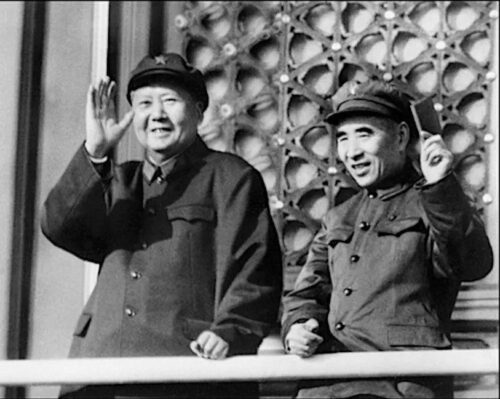Los Angeles Chinatown, 1871: One of America’s largest mass lynchings
In October 1871, 10% of the Chinese population in Los Angeles was wiped out in a senseless spasm of violence.

This Week in China’s History: October 24–25, 1871
Just 15 years old, Ah Loo had made the journey from China in 1871 to pursue opportunities in America, landing in California in the fall of 1871. San Francisco — the Chinese for which translates literally to “Old Gold Mountain” (旧金山 Jiùjīnshān) — was home to the most established community of Chinese-born people in the state, but Ah Loo wound up farther south, in Los Angeles.
L.A. was much smaller than San Fran, and its Chinese community was small as well, but it was growing rapidly: from just three in 1850 to 21 in 1860, and then 179 in the most recent census of 1870. Ah Loo took a room in the city’s Chinatown, most likely in the Coronel Block, a one-story adobe of storefronts and apartments that occupied the better part of a city block.
One week in, Ah Loo was already starting to find some of the opportunities that had drawn him from China, probably from Guangdong. He finished work on Tuesday, October 24, and walked home around 9 p.m., along with a coworker. A third member of the party, Tong Won, had just arrived in L.A. from San Francisco, where he was a musician. Perhaps he was heading home to rehearse? Or maybe he had come to Los Angeles to play for the growing Chinese community.
Whatever their plans might have been, as they made their way toward the Coronel building, they were intercepted by a mob: some 500 people, many of them with guns and other weapons. With no knowledge of the riot’s cause, the three were beaten and kicked. The crowd threw ropes around their necks and paraded them through the streets, looking for a gallows. Several bystanders tried to intervene against the violence — to stop the murder in progress — but were beaten back or threatened.
A mob of 500 is intimidating regardless of the context, but its size was remarkable in Los Angeles of 1871. Los Angeles today is one of the world’s great cities, home to nearly 4 million people (close to 20 million live in the greater metro area). In 1871, there were only 6,000 people in the city, meaning that the mob comprised almost 10% of the population. The mob was twice as large as the city’s entire Chinese population, most of which was concentrated in the area around the Coronel Block.
Within a few minutes, the bloodthirsty crowd found an awning in front of a wagon shop. The ropes were threaded through the structure, and the men were lifted up by their necks. They did not quickly die. As historian Scott Zesch recounts in his book, Chinatown War: Chinese Los Angeles and the Massacre of 1871, the three men struggled for their lives, grabbing hold of the rope and trying to stave off strangulation. “For nearly five minutes,” Zesch writes, “two rioters beat [Tong Won’s] hands with clubs and pistols. Once they had beaten the flesh to a bloody pulp, Tong Won dropped into the noose. Three other mob members emptied their revolvers at him, shattering his head with bullets. He was also stabbed.”
The mob joked that they needed more work. One man danced and bowed with each successive murder.
Soon after Ah Loo and Tong Won were murdered, the crowd turned on another resident of the Coronel. He was a doctor, known as Gene Tong, who was well respected as an ambitious businessman and “an inoffensive man respected by all the white people who knew him,” according to an 1894 account of the massacre. His reputation couldn’t save him. Gene Tong was hanged while begging for his life in English and Spanish, even having a finger pulled off to get at the diamond ring he wore. Tong’s brother survived, barely: shot in the neck.
At least 18 Chinese men were lynched that night. Several dozen survivors found their way to the jail where they passed the night with the bodies of the dead lined up outside.
What led to this spasm of violence that resulted in the deaths of 10% of Los Angeles’s Chinese population, one of the largest episodes of mass lynching in American history? The immediate cause was a shooting that began in a fight between rival Chinese huìguǎn 会馆: native-place associations, like guilds, that served numerous purposes for Chinese immigrants, including help finding work and lodgings. In this case, two huiguan hired (Chinese) gunfighters to settle a dispute involving a kidnapping. When police came to investigate the fracas, two of them were wounded, and a civilian named Robert Thompson came to intervene — by firing shots randomly into a crowded building — and was shot in the chest and killed by return fire.
Word of Thompson’s death spread quickly, and brought out the lynch mob. Rather than seeking Thompson’s killer (he would be apprehended weeks later), the mob sought revenge on any Chinese it could find.
But of course, anti-Chinese attitudes in California went back much further than October of 1871. They can be seen perhaps most easily in the 1852 speech of John Bigler, then a candidate for governor. Speaking as the population of the brand-new state was exploding, Bigler warned that “millions” of Chinese would soon overwhelm the new state: “The facilities afforded them for emigration are rapidly increasing, and few vessels now enter our ports from Asiatic countries which are not crowded with these peculiar people.” Bigler called for formal laws to limit or forbid Chinese immigration to the United States, which was eventually enacted in the Chinese Exclusion Act of 1882 that outlawed Chinese immigration to the United States. The massacre in Los Angeles, and others like it across the American west, showed the line of anti-Chinese, and anti-Asian, attitudes and actions that led to the law.
It’s important to remember, too, that the Chinese migrants who made their way to the United States were not passive, and word of anti-Chinese attitudes and actions made their way to China. Zesch records one group of Chinese immigrants as having been warned that the people in the United States were “fierce and wicked,” as a way of discouraging them from seeking time here. In the aftermath of the massacre, Chinese residents of Los Angeles expressed anger amid their grief as they looked for their loved ones, not knowing if they would find them dead or alive. “When an American gets mad,” one Chinese man told a reporter, “he damn fool. He kill good…all same [as] bad.”
This week’s This Week in China’s History is the second of three straight that take place primarily, or entirely, outside of China. It’s not clear, in this case, how many of the people involved in the story thought of themselves as Chinese. Nonetheless, I think this week’s case is a part of China’s history, just as it is part of American history and Asian-American history, because it shaped China’s impressions of and attitude toward the West, with profound implications for both sides of the relationship.
This Week in China’s History is a weekly column.





